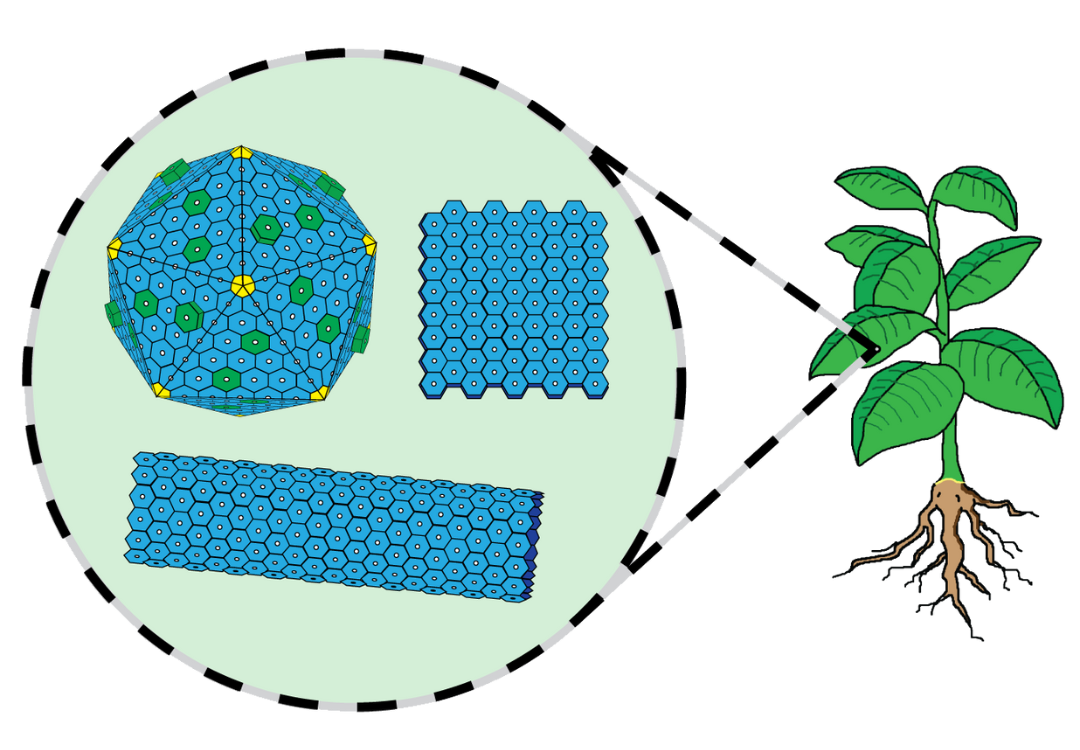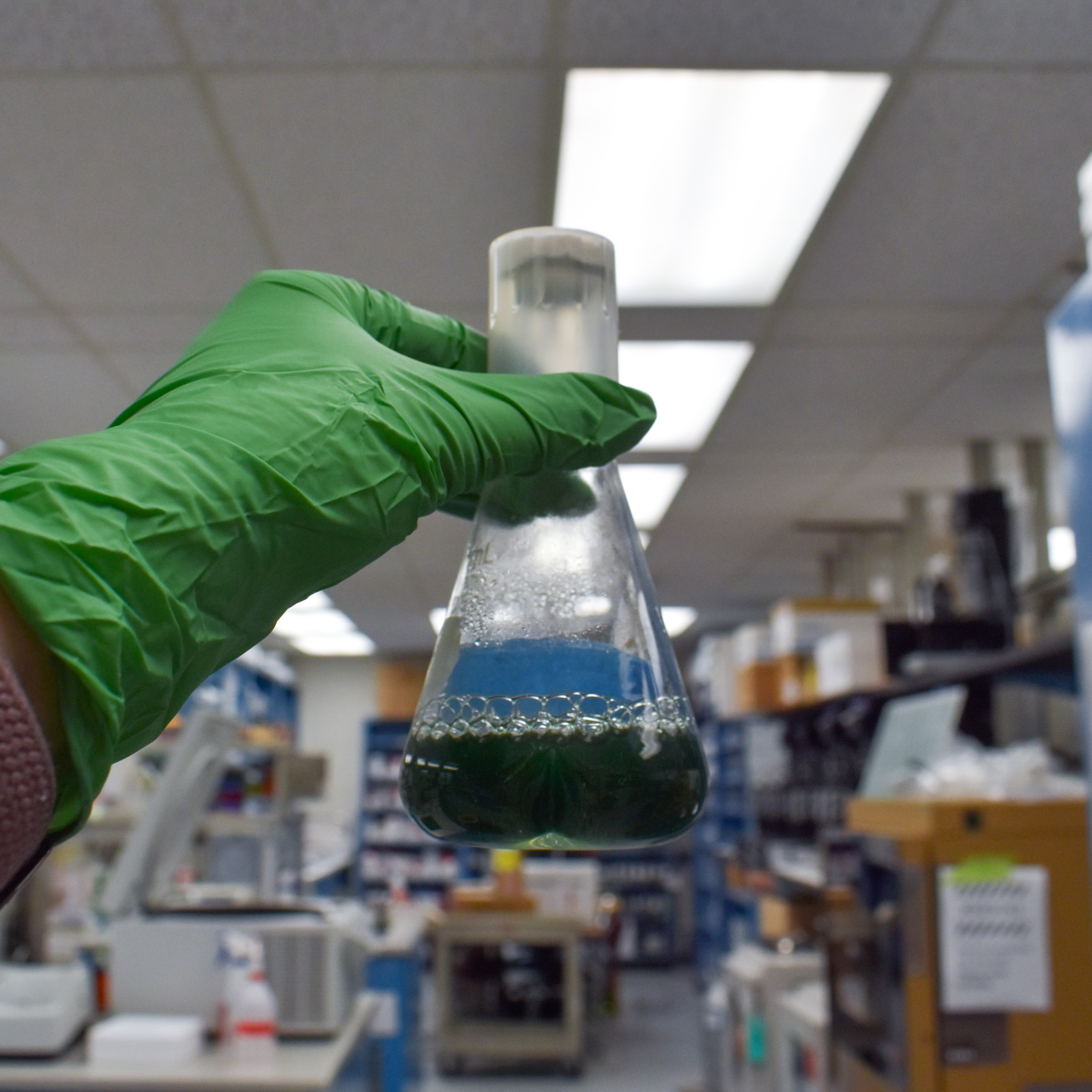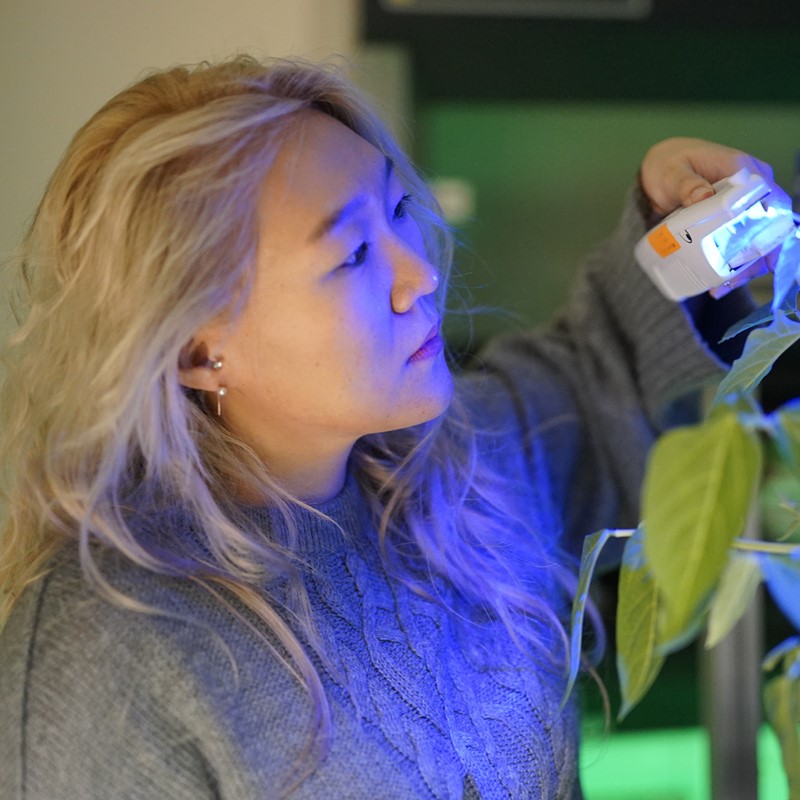The potential of bacterial microcompartment architectures for phytonanotechnology
The new field of phytonanotechnology, which involves the use of engineered nanoparticles (ENPs) to enhance/alter plant systems, promises to have an immense impact on critical global problems related to climate change and the scale of food production.

BMC-based architectures (spherical shells, nanotubes, 2-dimensional sheets) have immense potential for use in the field of phytonanotechnology. These protein-based structures can be assembled in vitro to display or encapsulate cargo; alternatively, they can be expressed directly in plants.
By Daniel A. Raba
Scientific Achievement
The application of ENPs in plants will allow for targeted ‘on-command’ and ‘on-demand’ delivery of agrochemicals, bioactive molecules and other growth enhancers to plant systems. In this review, we present an overview of different ENPs being tested for use in phytonanotechnology and a perspective on the potential of bacterial microcompartment (BMC) shell proteins as a set of building blocks that are poised to become a structural platform for phytonanotechnology.
Significance and Impact
This article, for the first time, compares BMC-based architectures—shells, nanotubes and two-dimensional sheets—to ENPs as platform technologies for phytonanotechnology. BMC-based architectures are ideally suited for plant systems applications due to their ease of production and manipulation, potential for multifunctionality and their biodegradability. Unlike other ENPs (such as lipid-, metal-, and carbon-based ENPs) BMC-based architectures are genetically encoded and can readily be ‘programmed’ via codon mutagenesis to fine-tune surface structure, charge, hydrophobicity—critical factors governing their interactions with plant tissues. Moreover, because BMC-based structures are composed entirely of protein, they can rapidly be assembled and modified for functionality in vitro and can also be expressed directly in vivo within plants through transient expression or genome incorporation.
Research Details
- ENPs are designed with key physiochemical properties that allow them to be functionalized as nanocarriers within plants. These properties are based on their unique morphology, surface structure, chemical composition and solubility.
- ENP platforms being investigated include liposomes, mesoporous silica nanoparticles, carbon nanotubes, gold nanoparticles, magnetic nanoparticles, metal oxide nanoparticles and quantum dots.
- Genetically encoded, protein-based bacterial microcompartment (BMC) architectures (spherical shells, nanotubes, 2-dimensional sheets) have potential as a “green” nanotechnology platform for use in phytonanotechnology.
- Currently, several methods are available appending and organizing cargo on BMC-shell proteins, but further development of the platform is required for their effective use within plant systems.
Related people: Daniel A. Raba and Cheryl A. Kerfeld
This work was supported by the Office of Science of the US Department of Energy DE-FG02-91ER20021 and MSU AgBioResearch.



